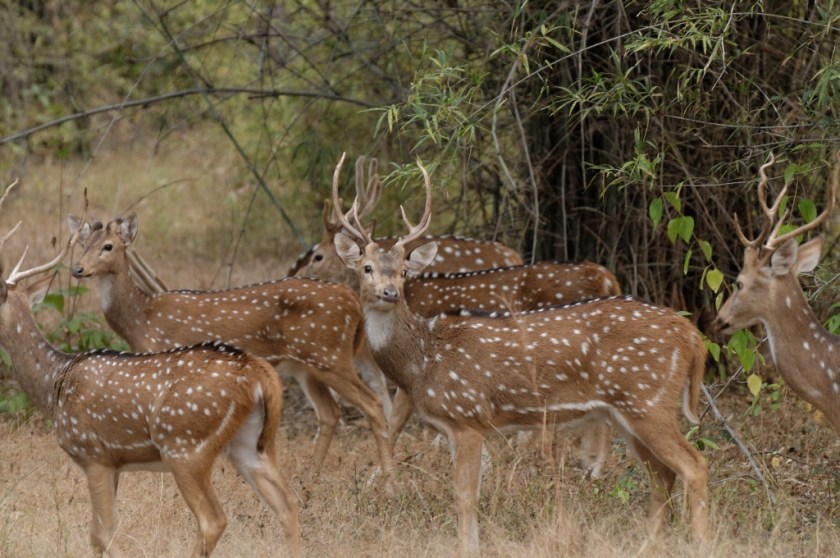
And it’s the last post in this blog thread for Bobbo! I present the Grande Finale: Installment # 42! describing what to call groups of animals … See how many you can guess. Answers listed at the bottom of the page.

Well-hidden knot member. Back trails, Cranberry Lake, Adirondacks
- This herd wasn’t on a leash.
- The obstinate gang ganged up on the humans.
- It’s not easy to find this knot.
- The cluster clustered on blossoms.
- I’m troubled by the trouble brought on by a troubling.
- A mute is anything but!
- A gargle really has necks to gargle.
- After reading this wonderful blog thread I hope you all now worship the worship!
Answers:

- Herd of deer [1]
- Herd, gang AND obstinacy of water buffalo [2]
- Knot of toads
- Cluster of dragonflies [3]
- Troubling of goldfish
- Mute of hound dogs
- Gargle of swans
- Worship of writers [4]




NOTES: [1] Also known as a leash of deer [2] Herd, gang and obstinacy of water buffalo National Geographic [3] Cluster, swarm or flight of dragonflies [4] Australian Geographic and An Exaltation of Larks by James Lipton.

NOTES on NOTES: I almost never put myself in my posts. For this final hurrah a photo and the final, special definition are called for. Thanks and much love to all my readers for sticking with this thread and sharing your feedback. — Jadi
© Jadi Campbell 2021. All photos © Uwe Hartmann. To see more of Uwe’s animal photos and pics from our trips go to viewpics.de. Fun animal names from www.writers-free-reference.com, Mother Nature Network and www.reference.com.

Click here for my author page to learn more about my books and me.


 And it’s the first half of the last post in this blog thread for Bobbo! I present the Grande Finale: Installment # 41! describing what to call groups of animals … See how many you can guess. Answers listed at the bottom of the page. Happy Easter, everyone. May the world be reborn.
And it’s the first half of the last post in this blog thread for Bobbo! I present the Grande Finale: Installment # 41! describing what to call groups of animals … See how many you can guess. Answers listed at the bottom of the page. Happy Easter, everyone. May the world be reborn.










 Chickens can’t fly (although they will get a running start and stay airborne for a second or two). There are more chickens than any other bird. According to Wikipedia, “[t]he domestic chicken is descended primarily from the
Chickens can’t fly (although they will get a running start and stay airborne for a second or two). There are more chickens than any other bird. According to Wikipedia, “[t]he domestic chicken is descended primarily from the 
 We didn’t witness any of the usual pecking order. Maybe these hens were too hungry.
We didn’t witness any of the usual pecking order. Maybe these hens were too hungry.



